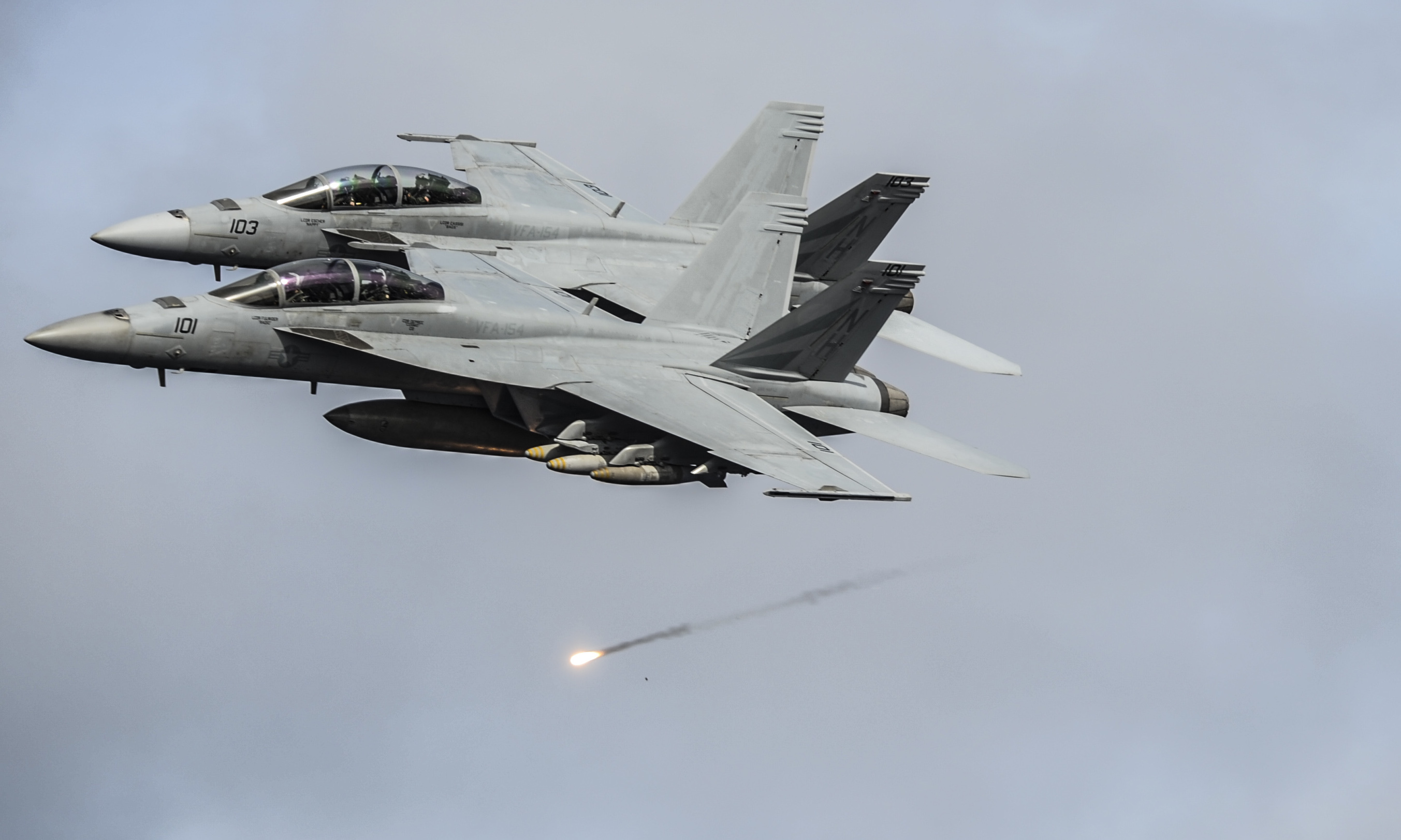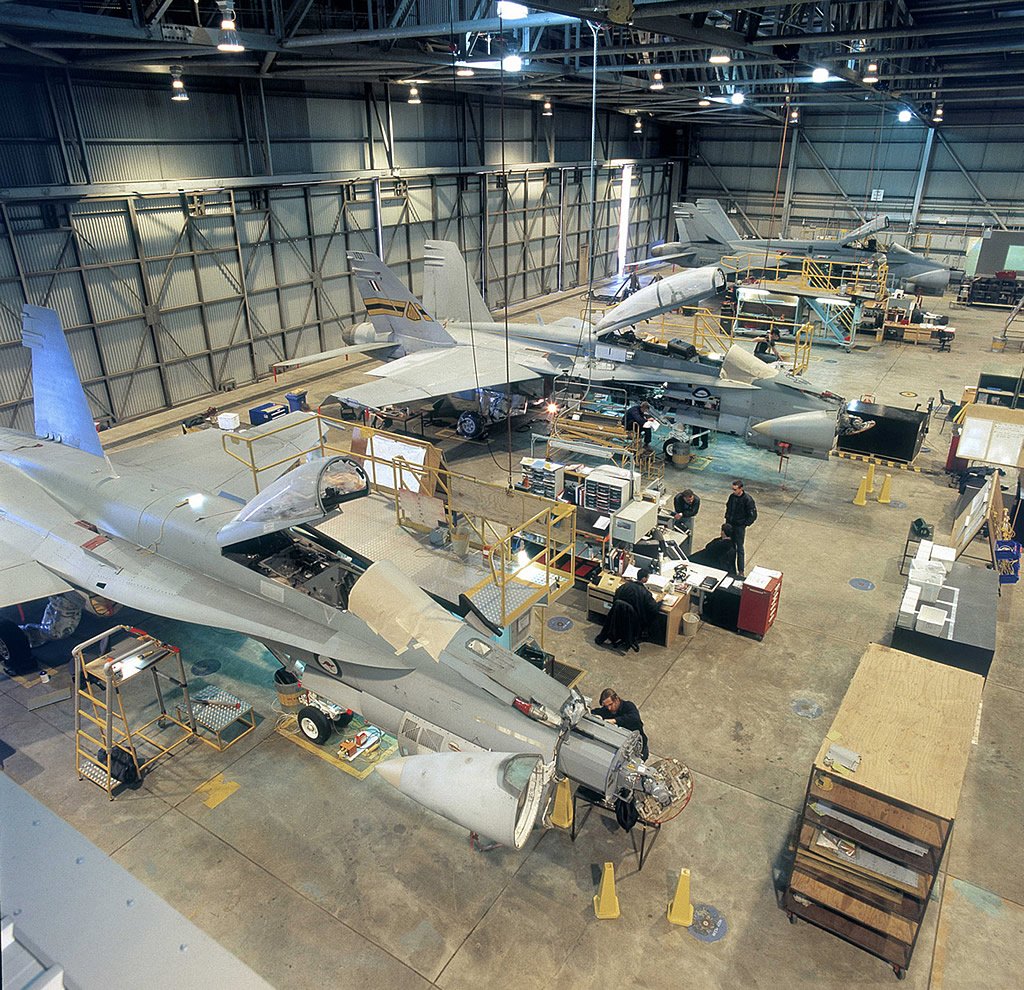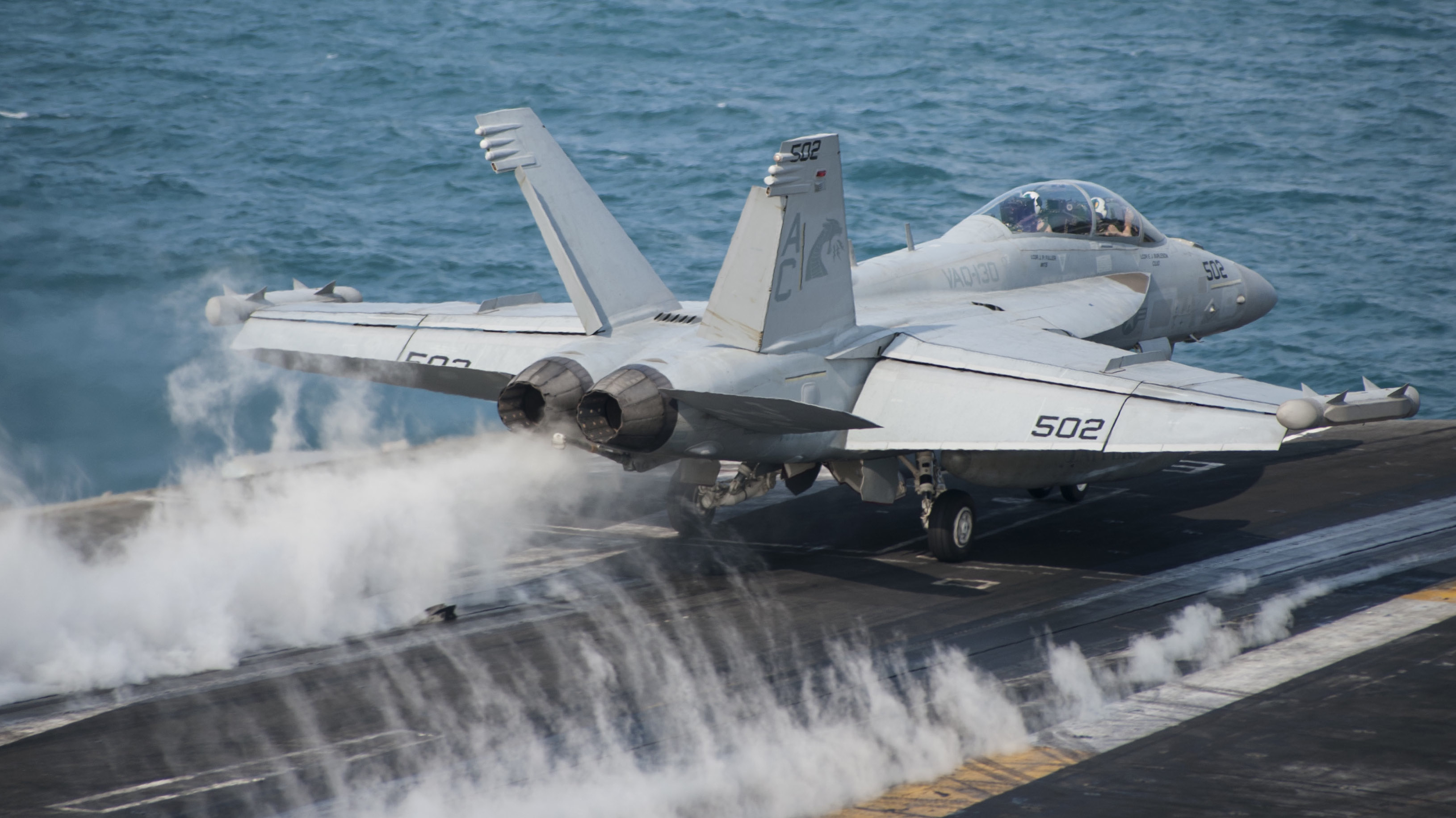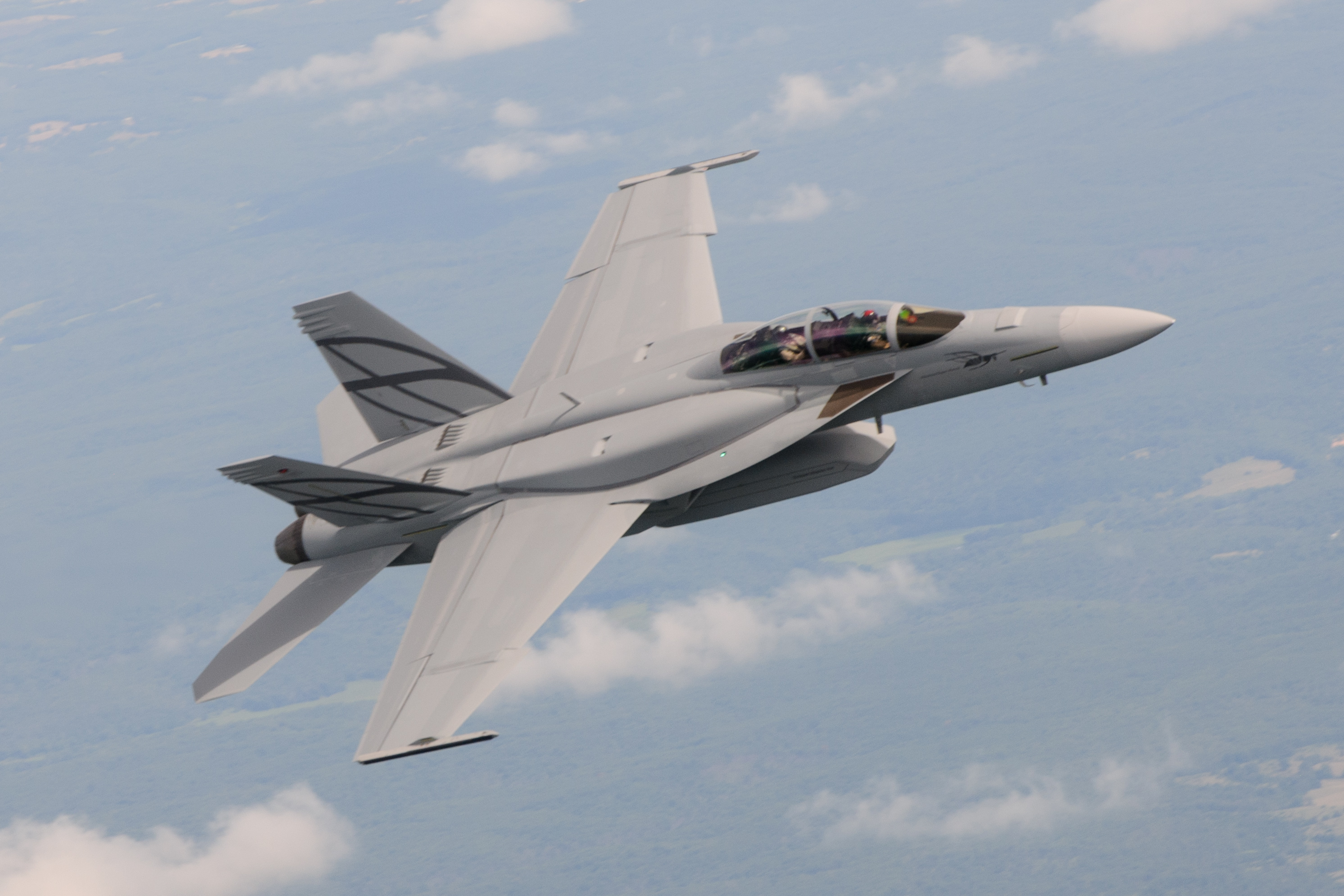
This story has been updated to include a statement about the Navy’s upcoming release of an Unfunded Requirements List.
WASHINGTON, D.C. — The Chief of Naval Operations (CNO) warned Congress of an upcoming Navy fighter shortfall just as Boeing is trying to determine whether to keep its Super Hornet and Growler production line open, setting the stage for intense talks between the service and company in the coming months about whether the Navy should and can afford to invest in additional fighters.
Adm. Jonathan Greenert explained the problem as a multifaceted one: the Navy is working to extend the life of its legacy Hornets, the Boeing F/A-18 A-D Hornet frames. “We’re finding that’s it’s very complicated and it’s harder than we imagined,” he said. So as the Navy depots keep the legacy Hornets out of commission for longer, the F/A-18 E/F Super Hornets are picking up the slack and eating through flying hours faster than planned.
“So we’re taking life out of them, if you will, sooner than we wanted to,” Greenert said, even though the Navy needs the Super Hornets to stay in its airwings alongside the F-35 Joint Strike Fighter through 2040.
The Super Hornets have been further drained over the past decade with a high operational tempo in the Middle East and the fighters often acting as tankers to refuel other planes. The Navy may use its forthcoming Unmanned Carrier Launched Airborne Surveillance and Strike (UCLASS) aircraft or the Bell-Boeing MV-22 Osprey as aerial refueling tankers to preserve the fighters’ flight hours.
The situation has created a problem for the Navy, the extent of which is still not fully understood. Greenert told reporters Tuesday that by this summer he would have the depots fully staffed and studying the ability to extend the legacy Hornets’ lives from 6,000 flight hours to 9,000 hours. After a year of this work – 15 months from now – the depots should be able to tell Greenert whether the majority of the legacy fleet could reach 9,000 hours or not.
Navy spokesman Capt. Danny Hernandez said the Navy intends to extend the service life of most legacy Hornets to 9,000 flight hours, and some to 10,000 hours – though each plane comes into the depot in its own material condition, so the depot work in the coming year will help officials understand if that goal is feasible.
“If they can be extended, that really suppresses the problem. If they can’t be extended, that exacerbates the problem,” Greenert said.
For now, though, Greenert said it looks like the Navy will face a fighter shortfall of about three squadrons, or 36 jets.
One way to mitigate the shortfall is to extend the lives of the Super Hornets, which the Navy and manufacturer Boeing are beginning to study. Another way is to buy more Super Hornets.
Production Line Concerns

If the Navy chooses to buy more planes to help mitigate the expected shortfall, Boeing can’t wait 15 months to find out. Dan Gillian, Boeing’s F-18 Super Hornet and Growler program manager, said the company must decide by mid-year if it will begin buying long lead materials for additional planes beyond what the Navy ordered in the Fiscal Year (FY) 2015 budget.
Between the 15 F/A-18G Growlers the Navy bought in FY 2015 and the “production stretch” the Navy and Boeing agreed to to slow down production from three to two planes a month, the St. Louis factory will continue working until the end of 2017.
“The key thing with all that is, we’ve got to make a decision later this year, in the middle of this year, about whether we’re going to begin the next airplanes or not,” Gillian said.
“So we talk with the Navy, we talk with our international customers or potential international customers to understand what that market space looks like, and that will help us make an informed company decision in the middle of this year.”
Denmark is seeking a new fighter and is expected to make a decision in June or July, Gillian said, and a customer in the Middle East is working towards a downselect “that could happen the second quarter, as early as the second quarter of this year.”
Other competitions, including Belgium and potentially Canada, are farther down the road, so Boeing is relying on the U.S. Navy as the main source of stability if it is to continue the production line, Gillian said.
Unfortunately for the company, it is unlikely that Congress will have completed the Navy’s budget by the summer, or even settle the matter of sequestration funding restrictions as part of the Budget Control Act of 2011 (BCA).
The Navy will, however, release its Unfunded Requirements List “soon,” Hernandez, the Navy spokesman, told USNI News. The list must be sent to Congress within 45 days of the budget request release, which happened Feb. 2, and could provide additional insight about the Navy’s desire to buy more Super Hornets or Growlers.
Gillian said the company will continue to collect facts and data in the coming months before making a decision, but one factor that may sway the decision is that the Navy not only needs more Super Hornets but potentially also more Growlers, which use the same long lead materials.
“CNO has said he thinks he’s good for the U.S. Navy-only engagements, but most of the engagements we have are joint engagements,” Gillian said.
“The Growler is the jamming platform for all the services, so they’re really still looking at that joint engagement and do they have the right number of airplanes.”
Super Hornets Versus Growlers

In the longer term, a Navy decision to buy more Growlers would do the best job preserving options for Boeing and its supply chain. Gillian explained that, due to the advanced electronics needed for the Growlers’ airborne electronic attack capability, Boeing could stop making Growlers and start making Super Hornets, but it could not do the opposite without incurring additional costs.
“That’s not to say you can’t build a Growler if you stop building Growlers for a while, it’s just there’s a nonrecurring bill to get the electronics up and running again,” he said.
Still, he said a sale is a sale, and Boeing would be happy to keep the line open to produce either or both planes, if the Navy and Congress can find room in the budget to do so.
Super Hornet SLEP

While pushing for more Super Hornet sales, Boeing is also working with the Navy to determine what it would take to bring the planes from a service life of 6,000 flight hours to 9,000 flight hours, to help mitigate the fighter shortfall.
Gillian said Boeing had already looked at the parts of the plane most likely to cause problems as the planes age, and is working its way down the list of parts from most to least problematic.
“We’re getting fairly well through it, probably have another year or so to go,” he said.
He expects that the Service Life Extension Program (SLEP) for the Super Hornets will go smoother than for the legacy Hornets, he noted, saying “there are obviously areas that need to be addressed, but I think we’ve seen a big improvement from classic Hornet to Super Hornet in terms of what all it would take.”
The Navy’s “flight plan” to keep the jets modern and relevant through 2040 includes not only software upgrades and increased computing capacity, but also the Infrared Search and Track (IRST) pod that will join the fleet in 2017, the Integrated Defensive Electronic Countermeasures Block 4 with improvements for the electronic warfare self-protection suite that will be installed on Super Hornets beginning this year and legacy Hornets next year, and an enhanced Active Electronically Scanned Array (AESA) radar.
Additionally, Boeing has invested internal research and development money on a conformal fuel tank, which would reduce drag and increase the range of the Super Hornets and Growlers.
“We’ve worked that with Northrop Grumman, we’ve done some wind tunnel testing in the last couple of weeks that helps advance that technology. We think that’s probably the closest one to becoming program of record,” Gillian said, adding it could be installed on jets as early as 2020 or 2021 if the Navy decided to begin the program in its FY 2017 budget.
As the Navy and industry begin work on the F/A-XX future fighter program, meant to replace the Super Hornets beginning in the 2030s, Gillian said Boeing’s work on the Super Hornet upgrades and backfits in the flight plan will be a good starting point.
“Those capabilities and technologies will help us develop F/A-XX, hopefully they are transferrable in some cases and relevant,” he said.





